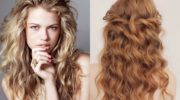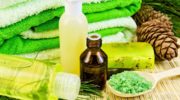Perm is one of the radical ways of changing your image. Today, there are more gentle ways to curl hair, for example, bio-curling, which we described in recent article. However, perm is still very popular among women. After all, having beautiful curls is the dream of almost every owner of straight hair. Perm is able to create curls even on the most naughty and thick hairs, giving them a grandiose volume. In this article, we will consider the main types of perm, talk about the procedure itself and about all its shortcomings and advantages.

Features of a procedure of a chemical wave
It is worthwhile to understand that perming is a very complex and not entirely harmless procedure for your hair. Before you decide on a perm, you first need to evaluate the structure and type of your hair.
IMPORTANT! In no case, perm can be done on very thin and weakened hair, unless of course you want to lose them too.
In addition, it is worth remembering about the scalp. If you have injuries and injuries, as well as any skin diseases or allergies, perming is contraindicated for you.
Before perm, do not forget to conduct a test on the sensitivity of the scalp to the components of the composition for curling hair. In addition, the same composition for curling must be checked on the hair itself (on a small lock). If, after some time has elapsed, the strand soaked in the solution easily burrows, the composition must be made weaker.

Types of perming hair
Perm perm implies a huge number of various varieties. However, only 7 species are most common.
- Neutral perm. The most common type of perm. Suitable for any type and structure of hair. Holds for about 3 to 6 months.
- Alkaline perm. Slightly less sparing, but also giving a fairly persistent result, is the type of perm. However, it is worth paying attention that for very coarse hair it is not suitable due to its softness.
- Acid perm. Ideal for thick enough hair. The basis of the composition is thioglycolic acid. This type of curl is not suitable for thin and weakened hair. He will not hold on to them for long, and the hair after him will look like an overdried tow.
- Fundamental perm. Ideal for correcting overgrown strands after a previous perm. Allows you to curl hair from the roots and give the hairstyle a pristine volume.
- Carving. This is a kind of perm for short hair. The curls after it are soft and tender. Does not aggravate the hair structure, but is not suitable for too thin locks. Refreshes the image and makes it more romantic.
- American Perm. It differs from other types of perm in a larger size of curls. Suitable for owners of long hair, as it creates a dizzying volume on them.

Advantages and disadvantages of perming hair
The advantages of perms include:
- Giving volume to sparse hair;
- Getting rid of everyday styling;
- Creating a romantic and soft look.

However, as with any procedure based on chemistry, it also has its drawbacks:
- Contraindicated during pregnancy and lactation;
- Hair becomes drier and brittle;
- Contraindicated in case of allergies of various kinds;
- It can not be done on dyed basma or henna hair;
- Get rid of perm can only be done with a haircut.
Perm for short hair











Perm on medium hair












Perm on long hair

















